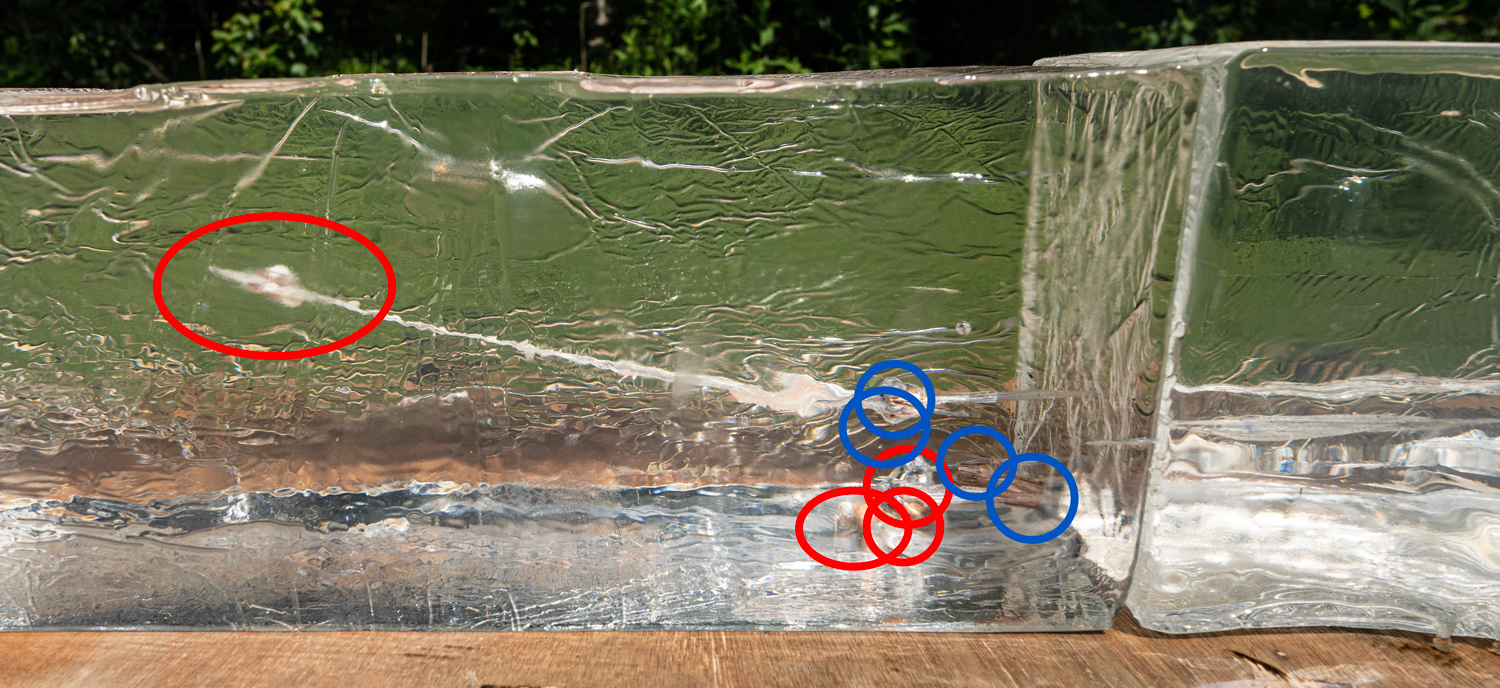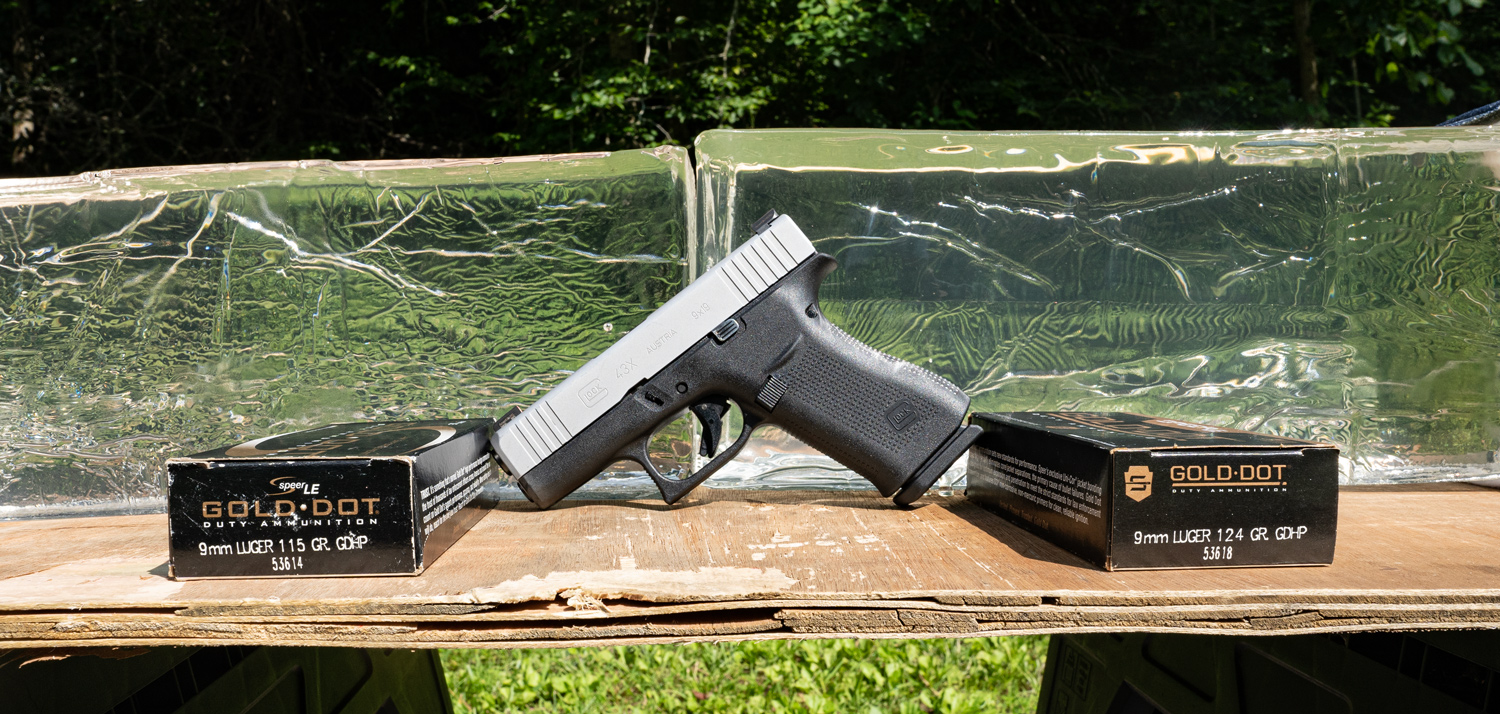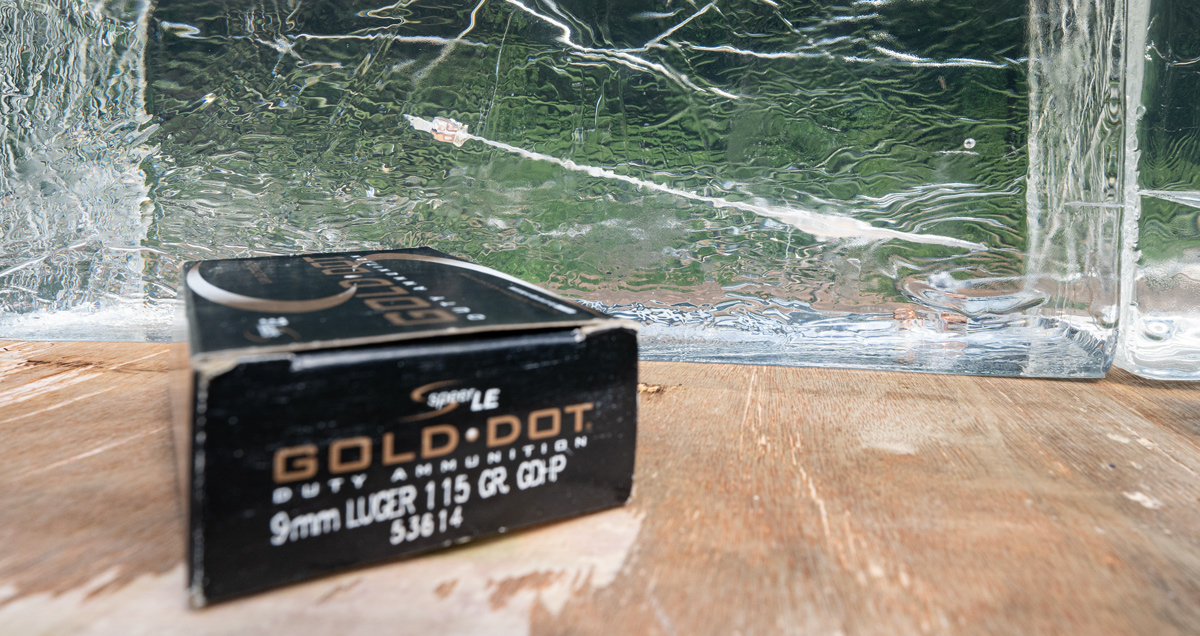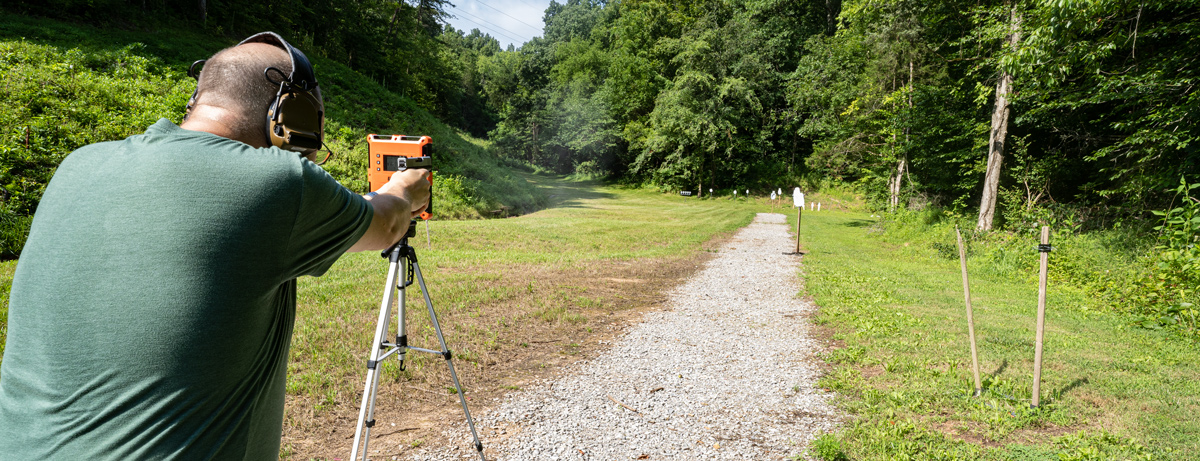What’s the difference between 115 grain and 124 grain 9mm ammo? We test Speer Gold Dots in ballistic gelatin and look at ballistics to get an accurate answer.
As the most popular handgun round in the county, and one of the most popular cartridges in the entire world, the 9mm Luger is used for personal protection, law enforcement, military sidearms, and affordable target shooting.
Because it’s so popular, manufacturers meet the large public demand by offering a huge assortment of options. Despite the dizzying variety of options, gun owners will often see two common bullet weights: 115 grain vs 124 grain 9mm ammo.
There are other options, but 115 (the standard load) and 124 are easily the most typical weights on store shelves and online stores. Take our online 9mm selection as an example. When this article was written, our online store had 52 different options for 115-grain 9mm rounds and 40 options in 124 grains. The only other weight that came close was 147 grain, which had 15 products.
In many cases, your choice may come down to 115 or 124 grains. But do nine grains (which equals barely over 0.02 ounces) really make a difference in performance, operation, and ballistics?
To find out, we need to see how these weights compare for velocity, energy, recoil, and trajectory. Only firing the rounds will give you the full picture, but these stats could help guide your purchase decision.
115 Grain vs 124 Grain 9mm Ammo for Self-Defense
We took to the range with two boxes of Speer Gold Dot 9mm ammo. One box was 115 grain. The other, 124 grain.
Using Clear Ballistics synthetic gelatin, we fired both rounds into the gel through a 4-layer fabric barrier with a Glock 43X pistol. This process is similar to what the Federal Bureau of Investigation uses to test ammunition for its agents.
First up, we fired the 115 grain into the gelatin.
The rounds cleared the first gel block completely and entered the second block. Three of the four rounds settled in between 17 and 18-inches of penetration. There was one outlier where the bullet didn’t seem to expand much, launching it much deeper into the gelatin.
From the same distance, we then fired the 124 grain Speer Gold Dot rounds.

You can see the results really don’t offer much of a difference if you’re looking for penetration. Pulling the bullets, we didn’t notice any real difference in expansion for either round. Especially if you discount the one, 115 grain outlier that over-penetrated, it’s tough to get too excited about the differences between these rounds.
So, is 124 grain better for self-defense than 115-grain? Maybe. But with our tests using the Glock 43X we can’t prove it. In both cases, we were more impressed by these test results from the 3.41″ barrel Glock 43X than what we observed in our robust self-defense ammo testing with a 3.1″ barrel Smith & Wesson Shield. (In that case, the 115 grain Gold Dots penetrated nearly 34″!)
Nine Grains of Difference: 115 vs 124 Ballistics
Velocity
| Muzzle Velocity (fps) | Velocity at 25 Yards | |
|---|---|---|
| Federal American Eagle (115 Grain) | 1,180 | 1,106 |
| Hornady Black XTP (115 Grain) | 1,155 | N/A |
| Speer Gold Dot JHP (115 Grain) | 1,210 | 1,133 |
| Winchester USA FMJ (115 Grain) | 1,190 | 1,125 |
| Average for 115 Grain | 1,184 | 1,121 |
| 124 Grain Loads | ||
| Federal American Eagle (124 Grain) | 1,150 | 1,095 |
| Hornady Black XTP (124 Grain) | 1,110 | N/A |
| Speer Gold Dot JHP (124 Grain) | 1,150 | 1,092 |
| Winchester USA FMJ (124 Grain) | 1,140 | 1,091 |
| Average for 124 Grain | 1,137 | 1,092 |
Velocity is an important factor because it impacts all others. It affects bullet energy, terminal ballistics, trajectory, and pistol performance. It should come as no surprise that the lighter bullet (115) comes with a little more speed.
It’s not a huge victory for the 115-grain bullets, but when the same products, with only a difference in weight, are compared (American Eagle FMJ rounds in 115 and 124, for example), the 115-grain option was always faster. Usually the muzzle speed is about 30 to 40 fps faster than the 124-grain options.
There were some close results; the slowest 115-grain was only 5 fps faster than the fastest 124-grain. But overall the 115-grain rounds are the speedier cartridges.
Winner: 115 Grains
Energy
| Muzzle Energy (ft-lbs) | Energy at 25 Yards (ft-lbs) | |
|---|---|---|
| Federal American Eagle (115 Grain) | 365 | 312 |
| Hornady Black XTP (115 Grain) | 341 | N/A |
| Speer Gold Dot JHP (115 Grain) | 374 | 328 |
| Winchester USA FMJ (115 Grain) | 362 | 353 |
| Average for 115 Grain | 361 | 331 |
| 124 Grain Loads | ||
| Federal American Eagle (124 Grain) | 364 | 330 |
| Hornady Black XTP (124 Grain) | 339 | N/A |
| Speer Gold Dot JHP (124 Grain) | 364 | 328 |
| Winchester USA FMJ (124 Grain) | 358 | 328 |
| Average for 124 Grain | 356 | 329 |
The results here are somewhat surprising. One might assume that the heavier bullet, with only a slightly slower speed, would be the more powerful round. But this is not the case. If anything, it’s actually weaker, although by such a small margin as to be virtually irrelevant.
The averages for the 124-grain products were slightly less powerful than the 115-grain averages. Overall, the difference was so slight that we really can’t say one is more powerful than the other, at least using the numbers we found.
Winner: Draw
Recoil
Felt recoil is an important factor in shooting. Recoil is impacted by the weapon, the cartridge, shooting performance, and more. The round being used, of course, can make a big difference.
When it comes to 115-grain rounds and 124-grain rounds, you might assume that the heavier bullet will deliver more recoil. However, this may not be the case, as the lighter round is also faster; all other factors the same, a faster projectile will give more recoil.
There are some numbers we could crunch, and some sources claim that the 124-grain will have more recoil. However, it seems like such a minor difference that it would not be a factor. If we were comparing, say, 115-grains vs 147-grains, then yes, we would probably see a difference.
In this case, however, recoil will not be a factor in your purchasing decision.
Winner: Draw
Trajectory
Whether you’re shooting for recreation or personal protection, a straight trajectory is always preferred. Unfortunately it’s hard to compare, as manufacturers are inconsistent when supplying this information.
Fortunately, Federal and Winchester offer trajectory stats on their products:
| 50-Yard Drop (Zeroed at 25) | |
|---|---|
| Federal American Eagle 115 Grain (FMJ) | .9 inches |
| Federal American Eagle 124 Grain (FMJ) | .9 inches |
| Speer Gold Dot 115 Grain (JHP) | .8 inches |
| Speer Gold Dot 124 Grain (JHP) | .8 inches |
Once again, the differences are so small as to be irrelevant. At 50 yards (when zeroed to 25) the cartridges we the exact same. There are some differences at 75 and 100 yards, but they are, once again, so small as to be irrelevant to most shooters.
For example, the American Eagle rounds, at 100 yards, have a difference of 0.1 inches. That’s hardly a difference that will matter to most target shooters. (Besides, how often will you actually shoot a 9mm handgun at 100 yards?)
115 Grain vs 124 Grain: Which One Should You Choose?
Honestly, these two cartridges are so close that it’s probably best to try both and see which one works for your specific needs. Personal preference, as well as the gun you use, could impact your decision.
You may find that the slightly-lighter recoil of the 115-grain is better. You may find you prefer the heavier weight of the 124-grain for personal defense. In the end, try both and see which one you prefer for home defense and target practice.
Order Your 115-grain and 124-grain 9mm Rounds Today!
If you need high-quality 9mm Luger ammunition, look no further than ammotogo.com. We have a full selection of affordable, reliable rounds for your specific needs, so visit our site and place your order today!




